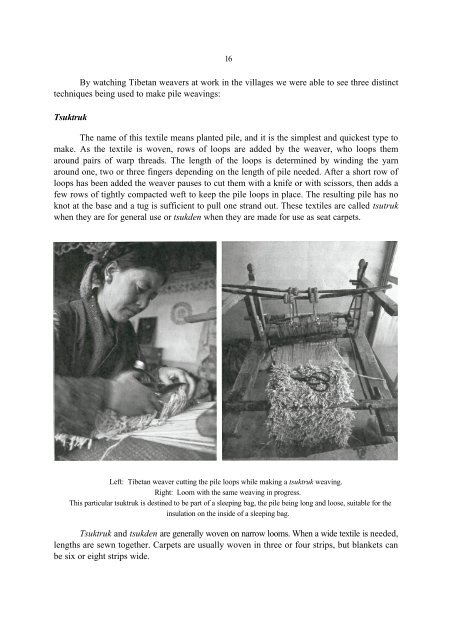download - OATG. Oxford Asian Textile Group
download - OATG. Oxford Asian Textile Group
download - OATG. Oxford Asian Textile Group
- No tags were found...
You also want an ePaper? Increase the reach of your titles
YUMPU automatically turns print PDFs into web optimized ePapers that Google loves.
16By watching Tibetan weavers at work in the villages we were able to see three distincttechniques being used to make pile weavings:TsuktrukThe name of this textile means planted pile, and it is the simplest and quickest type tomake. As the textile is woven, rows of loops are added by the weaver, who loops themaround pairs of warp threads. The length of the loops is determined by winding the yarnaround one, two or three fingers depending on the length of pile needed. After a short row ofloops has been added the weaver pauses to cut them with a knife or with scissors, then adds afew rows of tightly compacted weft to keep the pile loops in place. The resulting pile has noknot at the base and a tug is sufficient to pull one strand out. These textiles are called tsutrukwhen they are for general use or tsukden when they are made for use as seat carpets.Left: Tibetan weaver cutting the pile loops while making a tsuktruk weaving.Right: Loom with the same weaving in progress.This particular tsuktruk is destined to be part of a sleeping bag, the pile being long and loose, suitable for theinsulation on the inside of a sleeping bag.Tsuktruk and tsukden are generally woven on narrow looms. When a wide textile is needed,lengths are sewn together. Carpets are usually woven in three or four strips, but blankets canbe six or eight strips wide.
















